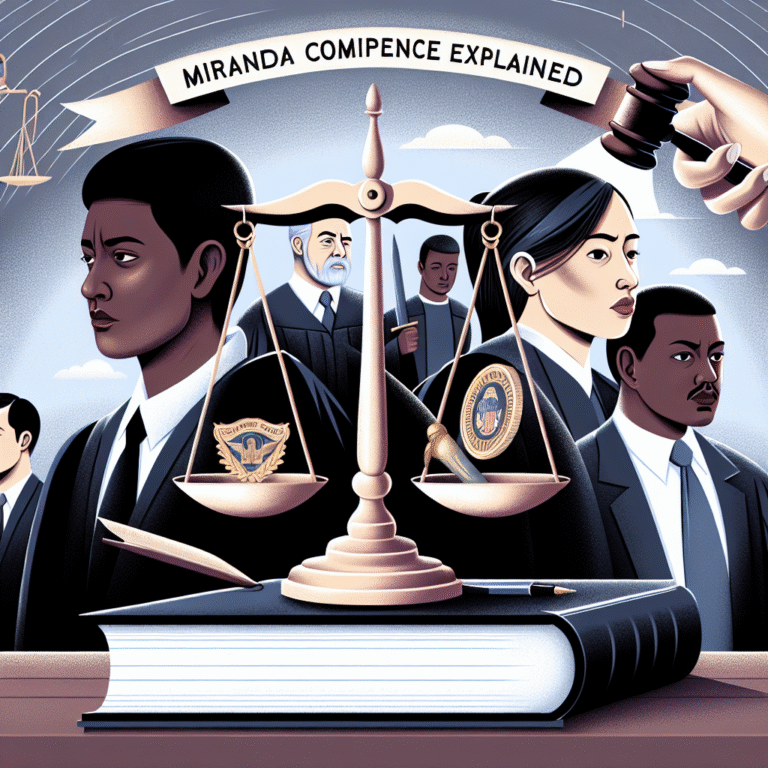
Introduction
In the realm of criminal justice, sentencing carries heavy implications, not just for the offenders, but for society at large. The concept of Sentencing Mitigation Strategies: Balancing Justice and Compassion in Court emerges as a beacon of hope in a system often criticized for its rigidity. This article delves into how mitigating circumstances, empathy, and a focus on rehabilitation can provide a more nuanced approach to justice.
Understanding Sentencing Mitigation
What is Sentencing Mitigation?
Sentencing mitigation refers to the consideration of circumstances that might warrant a lighter sentence for a defendant. These factors can include a defendant’s mental health, history of trauma, or socio-economic background. By incorporating these elements, Sentencing Mitigation Strategies: Balancing Justice and Compassion in Court can provide a more just outcome.
The Role of the Judge
Judges play a pivotal role in the sentencing process. They often have the discretion to consider various mitigating factors, but the extent to which they do so can vary significantly. This inconsistency raises questions about fairness and equality in sentencing practices.
Table 1: Factors Influencing Sentencing Decisions
| Factor | Description |
|---|---|
| Criminal History | Previous offenses and their severity |
| Personal Circumstances | Mental health, age, and family background |
| Nature of the Crime | Violence involved, level of premeditation |
| Impact on Victims | Emotional and financial toll on victims |
Historical Context
The historical approach to sentencing has often favored punishment over rehabilitation. However, recent shifts in societal attitudes have prompted a reevaluation of this perspective, fostering the development of Sentencing Mitigation Strategies: Balancing Justice and Compassion in Court.
Case Studies Illustrating Mitigation Strategies
Case Study 1: The Impact of Trauma
In the case of Sarah—an individual convicted for drug-related offenses—her defense team presented evidence of her traumatic childhood. The judge considered this during sentencing, resulting in a rehab program instead of jail time. This case exemplifies how Sentencing Mitigation Strategies can lead to more compassionate outcomes and help break cycles of addiction and crime.
Analysis
Sarah’s case highlights the importance of understanding the human story behind the crime. By addressing her trauma, the courts can promote healing and reduce recidivism, showcasing the potential of compassionate justice.
Case Study 2: Mental Health Considerations
Another notable example is the case of John, who committed a non-violent crime while struggling with severe depression. His legal representation ensured that his mental health condition was documented. As a result, the judge opted for a community service sentence, recognizing that treatment rather than punishment would be more beneficial.
Analysis
John’s situation underscores the necessity of integrating mental health into Sentencing Mitigation Strategies: Balancing Justice and Compassion in Court. By focusing on treatment, the justice system acknowledges that mental health issues can significantly influence behavior.
Case Study 3: Youth Offenders
Consider the case of a young man, Chris, convicted of a robbery at age 17. His defense highlighted his challenging upbringing and lack of guidance. The judge, moved by these factors, decided on a mentorship program instead of incarceration. This decision illustrates how Sentencing Mitigation Strategies can reshape young lives, steering them away from a life of crime.
Analysis
This case emphasizes the importance of early intervention in the lives of youth offenders. By addressing the root causes of criminal behavior, the court can guide young individuals toward a more productive path.
The Components of Effective Mitigation Strategies
Comprehensive Pre-Sentencing Reports
A crucial element of Sentencing Mitigation Strategies: Balancing Justice and Compassion in Court is the pre-sentencing report. These reports gather in-depth information about the defendant’s life, encompassing education, family history, and mental health. By presenting a holistic view, judges can make informed decisions.
Table 2: Elements of a Pre-Sentencing Report
| Element | Description |
|---|---|
| Personal History | Family background, education, and relationships |
| Social Context | Economic status and community support |
| Mental Health | Psychological evaluation and history |
| Substance Abuse | History of addiction and treatment efforts |
Community Involvement
Involving the community in the sentencing process can also enhance compassion in justice. Community service or restorative justice programs can help offenders engage with their victims, fostering healing and understanding.
Training for Legal Professionals
Equipping judges and attorneys with training in psychological and social issues can improve their capacity for empathy and lead to more informed decision-making in sensitive cases.
Overcoming Challenges in Implementing Mitigation Strategies
Resistance from Law Enforcement
One major challenge is the resistance from some segments of law enforcement and the judiciary, who may view compassion as leniency. Changing this perception requires persistent advocacy and education.
The Need for Policy Changes
Legislative reform can facilitate broader acceptance of Sentencing Mitigation Strategies: Balancing Justice and Compassion in Court. Advocates must rally for policies that prioritize rehabilitation and community service over incarceration.
The Future of Sentencing Mitigation Strategies
The emerging trend toward restorative justice and third-wave sentencing approaches suggests a shift toward integrating mitigation strategies. Future changes may include enhanced collaboration between social services, mental health professionals, and the criminal justice system.
Data-Driven Approaches
Utilizing data analytics to assess the effectiveness of mitigation strategies can bolster their acceptance. By showcasing successful outcomes, advocates can help motivate systemic change.
Conclusion
In conclusion, Sentencing Mitigation Strategies: Balancing Justice and Compassion in Court present a profound opportunity to transform criminal justice. By considering the multifaceted lives of offenders, the justice system can move toward a model focused on rehabilitation rather than mere punishment. The integration of empathy and understanding into sentencing practices has the potential not only to change individual lives but also to promote a more equitable justice system.
FAQs
1. What are general sentencing mitigation strategies?
General mitigation strategies include presenting evidence of a defendant’s character, mental health issues, trauma history, and socio-economic background to argue for a reduced sentence.
2. How does trauma affect sentencing outcomes?
Trauma can significantly influence behavior and decision-making. Acknowledging this during sentencing allows the court to offer more compassionate and appropriate responses, such as rehabilitation instead of incarceration.
3. Can mental health issues lead to lighter sentences?
Yes, mental health issues can serve as mitigating factors that may lead judges to impose lighter sentences or alternative forms of punishment, such as mental health treatment programs.
4. What role does community involvement play in sentencing?
Community involvement can aid in rehabilitation efforts and provide offenders with support networks, which can ultimately lead to better outcomes for both the individual and society.
5. How can advocates promote sentencing mitigation strategies?
Advocates can promote these strategies through education, collaboration with legal professionals, and lobbying for progressive policies that emphasize rehabilitation over punishment.
By focusing on Sentencing Mitigation Strategies: Balancing Justice and Compassion in Court, we can work toward a more humane and effective justice system that recognizes the complexities of human behavior while ensuring accountability.

















